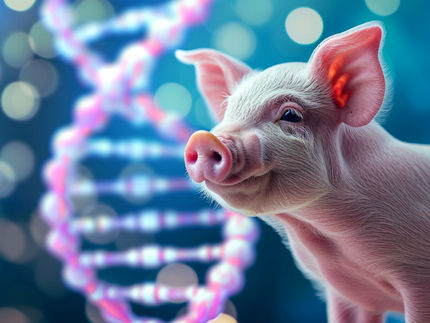Bioremediation fungus yields its secrets
Gene transfer from bacteria – and the corresponding stress!
Thanks to genes acquired from bacteria, a fungus can degrade an environmentally harmful hydrocarbon - and comes under considerable stress in the process. These remarkable research findings, which were published recently, were obtained by a group from the University of Natural Resources and Life Sciences, Vienna (BOKU). The results were made possible thanks to the very latest equipment for genome and transcriptome analysis, the use of which is also open to third parties at the BOKU.
Cladophialophora immunda may be a fungus but it is no mere mushroom! This ascomycete or sac fungus, which belongs to the group of yeast fungi, has one very impressive characteristic: it can easily decompose the environmentally harmful hydrocarbon Toluene. This makes C. immunda an excellent tool for the biological remediation of soil and other environments polluted with hydrocarbons. Using the very latest sequencing methods and a specially developed bioinformatic pipeline, Dr. Barbara Blasi and Dr. Hakim Tafer from Prof. Katja Sterflinger's team at the Department of biotechnology (BOKU, Vienna) examined, for the first time, precisely how the fungus does this. The surprising results of the study, which was recently published in the journal Scientific Reports, reveal that C. immunda acquired numerous genes essential for toluene degradation from bacteria and, moreover, that toluene degradation goes hand in hand with enormous stress, to which the fungus responds with numerous reactions.
Fast & reliable sequencing
The astonishing findings were also made possible thanks to the very latest sequencers, which are available at the university's EQ-BOKU core facility and can also be leased to third parties. They include an ion semiconductor sequencer (Proton Ion Sequencer), which enables the extremely rapid sequencing of large volumes of nucleic acids. This made it possible for the BOKU research team to obtain, among other things, valuable information about the activation of genes during toluene degradation. Prof. Sterflinger explains: "In this way, we produced the world's first transcriptome analysis of a fungus that grows on toluene. We were also able to show that C. immunda has almost all of the enzymes that were previously associated – from different organisms – with toluene degradation." The scientists even succeeded in demonstrating that the genes for these enzymes are grouped in five clusters on the DNA. Such gene clusters are not unusual in fungi, but this phenomenon had not previously been described for the genes that play an important role in hydrocarbon degradation. A comparison of the comprehensive sequence data from C. immunda with those of other organisms also demonstrated clearly that eight genes for toluene degradation were transferred from bacteria to the fungus in the past.
Mushrooming stress
When the team examined the activity of other genes whose expression was influenced by the toluene degradation, another surprise awaited them. "Despite its ability to degrade toluene very efficiently, the process creates enormous stress for C. immunda. An entire series of cellular metabolic processes are negatively affected by the contact with toluene," explains Prof. Sterflinger. These processes include basic cell functions like the production and degradation of amino acids and organic substances, cell respiration, and special transport mechanisms. The scientists were also able to demonstrate that toluene degradation triggers the production of antioxidants and activates cell detoxification mechanisms. All of these processes are unmistakable indicators of stress. "This suggests that, even though it can degrade it so effectively, C. immunda is no true friend of toluene," explains Prof. Sterflinger. "On the contrary, the effective destruction of the toluene appears to be a protective mechanism used by the fungus to shield it from its harmful effects."
The results of the study were also made possible by the successful cooperation between Prof. Sterflinger's group at the Department of Biotechnology and the University's EQ-BOKU core facility. This independent subsidiary acquires and operates numerous pieces of large and expensive equipment, such as the latest sequencers and gas chromatographs, and makes them available for use by both the university's own research groups and external parties. This means that the latter can also access the expertise of the BOKU's scientists for complex measurement tasks and entire research projects. EQ-BOKU's cooperation with numerous industrial concerns and international research groups testifies to the success of this concept, which also contributes to many internationally renowned research findings at the university itself.






















































